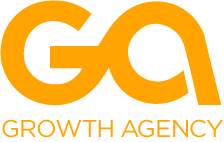If your business deals with customers in a certain local area, or has physical bricks-and-mortar stores, optimising your local landing pages is an easy way to grow your local SEO presence. In turn, this can help you to win more web traffic, generate more local leads and further grow your local revenue.
Whether you have a couple of locations or dozens, here’s how to set up your local pages for search success:
1. NAP
One of the most important elements of a local landing page is NAP. This stands for Name, Address, Phone Number. This information serves two purposes; it helps Google to verify your location and the authenticity of your business by comparing it with other NAP mentions across the web (such as in directory listings or on review sites). Secondly, it helps local consumers to find your business and get in touch if needed.
2. Optimised title and headers
Where possible, include the name of your business plus the location you are trying to rank for in your page title and in your H1 headers. You can get creative here and include your business name, city town or state plus your overall service or product name. For example, “ABC Plumbing Services, Central London” or “White & Co Window Cleaning, Paignton, Devon”. This information provides additional signals to Google about your business and where it’s located, which can further boost rankings.
3. Images and Videos
If you have a Google Business Profile (and you should for a local business), you may already have images and videos which show the interior, exterior and approach to your business. If so, these can be uploaded to your local landing page to add a useful multi-media element. Images and videos also show local consumers what to expect when visiting – taking images of things like accessible entrances, car parking and the road leading up to your location can all be very helpful for those planning a visit.
4. Use Schema markup
Using Schema markup is an easy way to give your local search visibility a boost. It tells Google what specific snippets of information on your page convey. You can use this to indicate useful details such as opening hours, services offered, price band and even reviews.
5. Reviews
Speaking of reviews, it’s also a great idea to include them on your local landing pages. Even if you’re creating local pages specifically to target higher rankings, the chances are that once those rankings are achieved, your locally focused pages will receive visitors. You therefore want to ensure you take every chance to encourage conversions.
Adding reviews, especially those that mention the specific location or local area, can seriously boost consumer confidence. Reviews provide social proof that customers are making a good choice when opting to do business with you or visit your local business. Especially if you have competitors in the local area, having strong reviews easily accessible on your site could give your business the edge.
6. Call to action
As with your optimised sales page, or product pages, your local landing pages should also feature a strong, clear call to action. This directs visitors towards their next step – depending on your business, this could be a call to schedule a visit, book a demo or even reserve a table, place an order, or reach out via email or phone.


